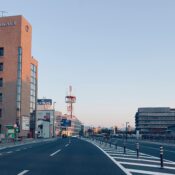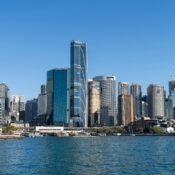
Venezuela: Culture, Traditions & Identity
Venezuela: Culture, Traditions & Identity
Culture & Heritage
Venezuela is a country defined by its diverse landscapes and rich cultural heritage. Located on the northern coast of South America, Venezuela is a melting pot of indigenous, African, European, and Caribbean influences, creating a unique cultural blend that shapes its identity. From the towering peaks of the Andes to the sun-drenched beaches of Margarita Island, Venezuela’s culture is as vibrant as its scenery.
Arts & Literature
Venezuelan literature has a deep historical connection to the country’s social and political developments. Rómulo Gallegos and Arturo Uslar Pietri are two of the country’s most prominent authors, with their works often exploring national identity, history, and the challenges of post-colonial Venezuela. Venezuelan poetry has also made a significant mark, with poets such as Andrés Eloy Blanco being widely celebrated.
In visual arts, Venezuela has produced many influential painters and sculptors. Armando Reverón, Carlos Cruz-Diez, and Jesús Soto are key figures who shaped Op Art and Kinetic Art, creating innovative works that reflect the country’s artistic vibrancy.
Music & Dance
Music is integral to Venezuelan culture, with genres like merengue, salsa, joropo, and gaita reflecting the country’s diverse cultural mix. Joropo, a lively dance and music style from the plains, is perhaps the most iconic, known for its fast-paced rhythms and use of traditional instruments like the cuatro (a four-string guitar), maracas, and harp.
Venezuelan music spans all regions of the country, with Gaita from the Zulia region bringing the African influence to the forefront, while Merengue and Salsa come from the Caribbean, influenced by Spanish and African roots. The Venezuelan folk music scene is deeply connected to the country’s rural and agricultural traditions.
Cultural Symbols
The Venezuelan flag — a bold yellow, blue, and red with eight stars — is a symbol of national pride and independence. The stars represent the eight provinces that originally declared independence from Spain. The National Flower is the orchid (Cattleya mossiae), and the National Tree is the cedar, both of which represent Venezuela’s natural beauty.
The Venezuelan Coat of Arms features symbols of agriculture, commerce, and Venezuela’s commitment to liberty and independence. El Ávila Mountain, located near Caracas, is a symbol of national pride and represents the rugged beauty of the land.
Traditions & Daily Life
Venezuelan society places strong emphasis on family, community, and faith. Whether in the Andean highlands or the coastal cities, Venezuelans share a warm and welcoming spirit, with a focus on close-knit family relationships and social gatherings.
Work & Lifestyle
Venezuelan life revolves around the family unit and community. The capital, Caracas, is a bustling metropolis, but rural areas still retain much of the traditional lifestyle, centered on agriculture and natural resource management. Venezuela is known for its oil industry, which has been a cornerstone of the economy, but other sectors such as agriculture (coffee, cocoa, sugar), manufacturing, and tourism also play vital roles.
Daily life in Venezuela involves a rich combination of work and leisure. Many Venezuelans work in family-owned businesses, agriculture, or government services, while larger cities like Caracas and Maracaibo have growing sectors in finance, media, and technology. Social life is heavily based around family gatherings, community events, and regional festivals.
Celebrations & Holidays
- Carnival (February/March) – Venezuela’s Carnival celebration rivals that of Brazil, with parades, costumes, and vibrant dances. The celebration marks the start of Lent and is deeply rooted in Catholic traditions.
- Independence Day (July 5th) – Celebrates the signing of the Declaration of Independence from Spain in 1811. Parades and patriotic displays are common throughout the country.
- Christmas (Navidad) – Like many Latin American countries, Christmas in Venezuela is a family-centered holiday with vibrant celebrations, feasts, and music. Misas de Aguinaldo (midnight masses) are held in many communities.
- Día de la Virgen de la Chinita (November 18th) – A religious celebration in the Zulia region, dedicated to the Virgin of Chinita, the patron saint of the state of Zulia. The holiday features pilgrimages, music, and dancing.
Other regional festivals include La Feria de la Virgen del Carmen and Feria Internacional de la Chinita.
Food Culture
Venezuelan cuisine is a fusion of indigenous, African, Spanish, and Caribbean influences. Popular dishes include:
- Arepas – Cornmeal cakes, typically filled with cheese, ham, meats, or vegetables.
- Pabellón Criollo – A traditional dish consisting of rice, black beans, shredded beef, and fried plantains.
- Hallacas – A holiday dish similar to tamales, made with corn dough, stuffed with a mixture of meats, vegetables, and spices, then wrapped in plantain leaves and boiled.
- Tequeños – Fried dough filled with cheese, a popular snack.
- Cachapas – Sweet corn pancakes, often served with cheese or cured meat.
- Asado – Grilled meats, commonly served at large social gatherings.
Street food is also an important part of Venezuelan culture, with vendors offering empanadas, cachitos, and pastelitos throughout the country.
Community & Social Life
Community plays a central role in daily life. Social gatherings, whether at home or in public spaces, are an important part of Venezuelan culture. Family is at the core of daily existence, with generations often living close to one another, supporting each other through work, celebrations, and challenges.
Venezuelans are known for their hospitality and warmth, making social gatherings vibrant, full of music, and often centered around food. The country’s sports culture is also significant, with baseball being the most popular sport, played by both children and adults in rural and urban settings.
Language & Religion
Language
- Spanish is the official language of Venezuela, and it is spoken by the vast majority of the population.
- There are also indigenous languages spoken by small communities, including languages like Wayuu, Pemon, and Yekuana, though many of these languages are endangered.
- Venezuelan Spanish has a distinctive accent, with some regional variations, especially in the Andes region and Caribbean coastal areas.
- Venezuelan Patois (or Venezuelan Creole) is also spoken in some Afro-Venezuelan communities.
Religion
- Venezuela is predominantly Roman Catholic, with over 70% of the population identifying as Catholic. Religion plays a significant role in daily life, and Catholic traditions are deeply woven into the fabric of Venezuelan culture.
- Protestantism has been growing in recent decades, especially in urban areas and among certain evangelical groups.
- Indigenous religious practices persist in certain rural and indigenous communities, blending with Catholic beliefs in forms of syncretic spirituality.
- Religious festivals are significant events in Venezuela, especially those tied to Catholic saints and the Virgin Mary, such as Día de la Virgen de la Chinita and Semana Santa (Holy Week).
All Categories
Recent Posts
Vida Academy
Guyana: Culture, Traditions & Identity
Australia: Culture, Traditions & Identity
+1 (804) 663 8383
connect@cultureecounters.org



